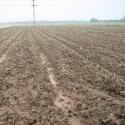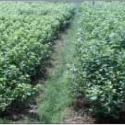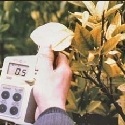10 Feb 2015
Study on Nutrient Management Technology for Vegetables in Wuhan

Red flower stalk is one of the main vegetables grown along the Yangtze river valley in Hubei, Hunan and Sichuan Provinces. Hubei is the largest red flower stalk production province in China with a total planting area of 53,000 ha. At present, unbalanced fertilization frequently limits red flower stalk yield and quality. Therefore, under the support of IPNI China program, the project cooperators of Agricultural Research Institute of Wuhan carried out this project in 2013 to 2014 to study the best nutrient management strategy for the crop. Treatments included five application rates each for N (0, 300, 600, 900, and 1,200 kg N/ha), P (0, 150, 300, 450, and 600 kg P2O5/ha) and K (0, 225, 450, 675, and 900 kg K2O/ha).
Fertilization improved leaf number, stalk number, single stalk weight, vitamin C content, and protein content of red flower stalk. Nitrogen and K were the most important nutrients for red flower stalk planting in the Wuhan region. Increasing N rate, along with K, produced a higher number of leaves, and single stalk weight increased significantly. Nitrogen fertilization increased the yield of red flower stalk. The research recommend an optimum N fertilization rate of 534 kg/ha with a yield goal of red flower stalk of 15,397 kg/ha. The optimal N, P2O5 and K2O fertilization rates for red flower stalk are 534 kg/ha, 150 kg/ha and 472 kg/ha, respectively.
Nitrogen application increased the nitrate content of stalk leaves significantly. With the increase of N application rate, the contents of soluble protein and vitamin C increased in early growing stages and then decreased slightly in later stages. The increment of soil available N content was significantly related to N fertilization rate.




